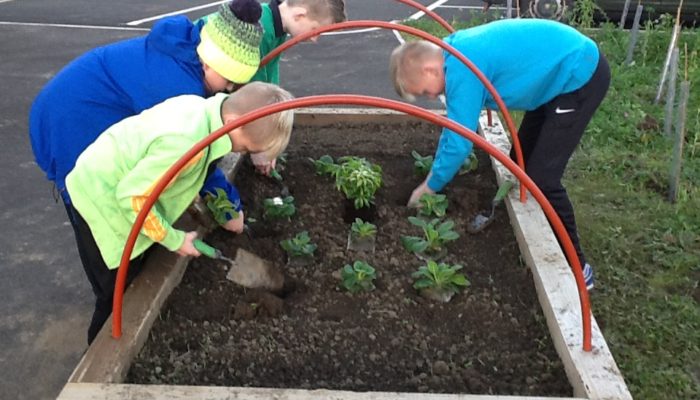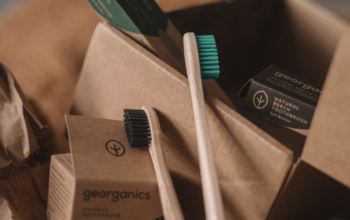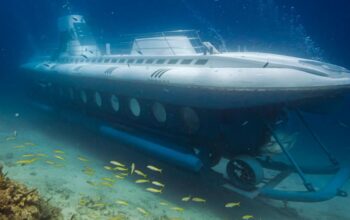Disclosure: As an Amazon Associate I earn from qualifying purchases. This page may contain affiliate links, which means I may receive a commission if you click a link and purchase something that I have recommended. There is no additional cost to you whatsoever.
For humans, life is a process of constant learning. Those who are learning the most are the world’s children. Since caring for the environment has become such an important task in recent times, why not teach the kids how to do it too? They can have fun while doing it and tell others how they helped preserve the earth. Start now and teach them all the basics of eco-friendly living. Here are some ways to do it that makes it fun for them and provides a purpose to guide them through life.
Here are ten ways to encourage eco-friendly habits in children.
1. Set an example
Parents are their children’s first role models, so you have to demonstrate what it is you want them to do in eco-friendly living. If you want them to turn off the water while brushing their teeth, do it yourself to be a good example. Turn off the lights upon leaving a room, open the windows for a fresh breeze, and turn off or unplug appliances that are not in use. The more they see you do it, the more often they will remember it as a positive trait for themselves.
2. Reduce, reuse, recycle
Teach your kids how to reduce by getting washable rags to replace paper towels. Purchase a reusable bag to take with you whenever you go shopping. Separate paper, glass, and plastic for recycling. Help the kids make fun, decorative boxes to sort the recycled items to make it more fun. Have them come up with new ways to use old items that would otherwise be thrown away. Ignite their creativity and help them grow and learn more about the world they live in.
3. Plant a garden

Prepare and plant a garden with your children to show them how much money you can save on groceries. Let them get deep in the dirt to experience the wonders of the earth and its creations. When the vegetables and herbs have grown, they can take pride in saying it is a project of theirs. Make sure to go organic while doing it too – pesticide-free with natural seeds.You can search with your child online to find many natural ways to deal with your garden’s bugs and weeds.
4. Experience nature
Get the kids immersed in the wonders of nature at a state park or wildlife refuge. Teach them about the importance of all living things and how to preserve them. Let them witness the beauty of natural resources such as flowing streams and towering trees. Experiencing the environment in its natural state will help children understand our dependence on the existing ecosystems and how they can make a difference.
5. Involve the whole family
Make sure your whole family is involved in the eco-friendly efforts you teach your children. Encouragement and example from everyone around them helps reaffirm the importance of what they are doing. Be sure that everyone is consistent in their eco-friendly actions to conserve and preserve, as well as to set memorable positive examples.
6. Volunteer together

Get the kids involved in your community action group for the environment. If there is a group just for them, allow a little independence so they can also learn from others and share with you their new experiences. This is a great social opportunity for the kids and gets them recognition in the community.
7. Take them shopping
Take the kids along when you go grocery shopping. Explain to them that you buy certain items to remain eco-friendly and support organic farming. Compare eco-friendly cleaners to the more popular ones with all the hazardous chemicals, and help them understand the effects each has on the environment. Let them make choices while shopping as you help them start a healthy, eco-friendly lifestyle.
8. Go to the landfill
Visit your nearest landfill so they can see firsthand what happens to all of our waste. Explain how conserving, reusing, and recycling contribute to decrease our waste output. Let them see all the appliances that are dumped and no longer used for spare parts or the ones that simply became outdated. Return home and review with proper waste management practices that they will remember throughout life.
9. Shop secondhand
If you are able to find new ways to use what you already have, show your kids how reusing can further be practiced by shopping secondhand. Whether it is clothing, trinkets, toys, or usable household items, show the young ones how things can still be used even if someone else no longer needs them. This is also a practical resources lesson for the children because they learn how to save money and still get something useful.
10. Line-dry the laundry
Whenever weather permits, show children that laundry can be dried outside by hanging in the sun and breeze. Have them help hang clothes then bring them in when dry. When they get in the habit of it, they can do it independently and lessen their own carbon footprint a little bit. Remind them that this helps conserve money and energy for use at a later time.
Teach your children eco-friendly habits now that they can take with them through life. If they learn these skills when they are still young, they have more time to innovate and start “Green” initiatives of their own. Share with them the joy that you feel when you make a difference that benefits the environment. The children of today are responsible for the future, so help them make good decisions now and they will make a bigger difference tomorrow.







